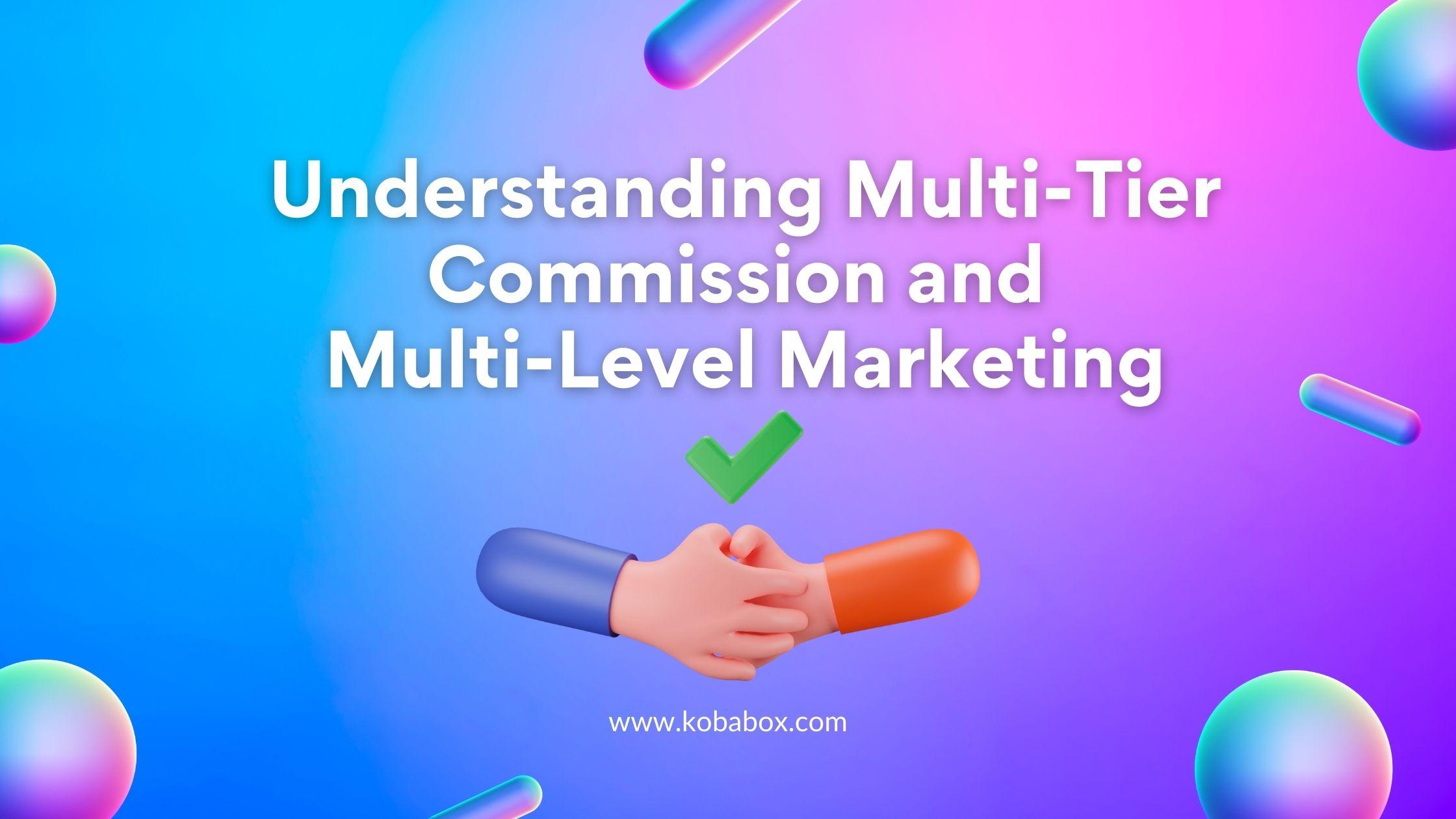Understanding Multi-Tier Commission and Multi-Level Marketing
In today’s digital revolution, businesses are constantly looking for ways to expand their reach and increase their revenue.
One strategy that has become increasingly popular is multi-tier commission and multi-level marketing (MLM).
In this article, we will discuss what these terms mean, the benefits of implementing them in your business,
and how to effectively use them to drive growth.
What is Multi-Tier Commission?
Multi-tier commission is a system in which a salesperson earns commission not only on their own sales, but also on the sales made by their recruits. This creates a hierarchical structure where the top salesperson earns a commission on their entire team’s sales.
For example, if a salesperson recruits 5 people and each of those recruits makes a sale, the top salesperson will earn a commission on those 5 sales in addition to their own. This creates a powerful incentive for salespeople to make sales themselves and recruit and train new salespeople.
Tiered Affiliate Programs
Tiered affiliate programs are similar to multi-tier commission and MLM.
Tiered affiliate programs can be an effective way for businesses to expand their reach and increase their revenue by leveraging the power of the affiliate’s network. It is wise to have a clear and easy-to-understand compensation plan and to provide ongoing training and support for your affiliates.
When joining a tiered affiliate program, researching the company and its business practices is more important than ever. You must ensure that the program is reputable and does not engage in unethical or illegal practices. It is not just your reputation but the reputation of your team that can be impacted. If you are in a position of power, please don’t abuse that power to make a few dollars.
What is Multi-Level Marketing?
Multi-level marketing, or MLM, is a business model that uses the same hierarchical structure similar to multi-tier commission. In MLM, a business owner recruits independent contractors to sell their products or services. These independent contractors then recruit their own team of salespeople, repeating the process.
The key difference between MLM and traditional sales is that in MLM is often many levels deep. It’s not uncommon to have MLM commission structures 5 levels deep!
An example of what this would look like on a $100 sale:
- commission (1st tier): 20%
- 2nd tier: 10%
- 3rd tier: 5%
- 4th tier: 3%
- 5th tier: 2%
Which equates to
- $20 (1st tier commission)
- $10 (2nd tier commission)
- $5 (3rd tier commission)
- $3 (4th tier commission)
- $2 (5th tier commission)
MLM Companies to Avoid
While Multi-Level Marketing can be a powerful strategy for businesses, it is important to be cautious when choosing an MLM company to work with. Some companies may have unethical or illegal business practices, which can harm salespeople and customers.
To avoid these companies, some red flags to look out for include:
- High recruitment fees: Some companies may charge exorbitant fees to join or become a salesperson.
- Stockpiling: Some companies may require salespeople to purchase large amounts of inventory that they may not be able to sell. (1)
- Pyramid scheme: Some companies may focus more on recruiting new salespeople rather than selling products or services. (1)
- False income claims: Some companies may make unrealistic claims about the income potential for salespeople.
Check the company’s reputation by looking for reviews online. Then, search for any legal action or complaints filed against the company.
To ensure that you are working with a reputable MLM company, avoid companies that fail the above checklist and look for those that focus on selling quality products or services.
Benefits of Multi-Tier Commission and MLM
The main benefit of multi-tier commission and MLM is that it creates a powerful incentive for salespeople. This helps to drive growth and expand the reach of the business while sufficiently compensating the salesperson.
Additionally, both multi-tier commissions and MLM create a residual income stream. This means that even if a salesperson stops actively selling, they will still earn a commission on the sales made by their team.
Another benefit of MLM is that it allows a business to reach new markets and customer bases without the need for a large investment in advertising and marketing. This is because the salespeople are responsible for promoting the products and services rather than the business itself.
How to Effectively Use Multi-Tier Commission and MLM
To effectively use multi-tier commission and MLM in your business, have a clear and easy-to-understand compensation plan. This will help to ensure that salespeople are motivated and understand how they will be rewarded for their efforts.
Additionally, provide training and support for your sales team. This will help to ensure that they are able to promote your products and services and recruit new salespeople effectively.
Finally, it is vital to have a good product or service that is in high demand. This will help ensure that your sales team can make sales and earn commissions.
Conclusion
To wrap it up, multi-tier commission and multi-level marketing are powerful strategies that can help drive business growth and increase affiliates’ earnings.
A win-win structure that many super affiliates have made a fortune from.
- Ai Tools Directory - August 8, 2023
- Mastering Affiliate Marketing: Your Complete Guide to Promotion Strategies - May 26, 2023
- Top Health Affiliate Programs: The Ultimate Guide for Health and Wellness Bloggers - May 23, 2023



